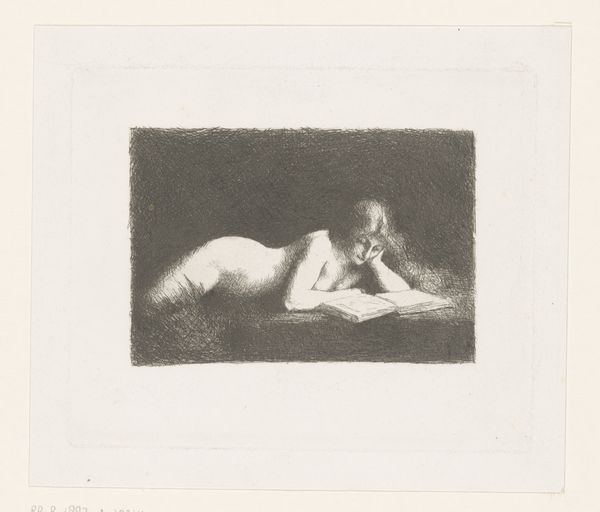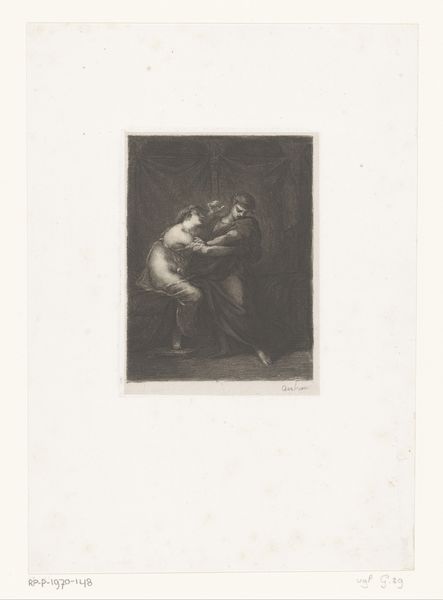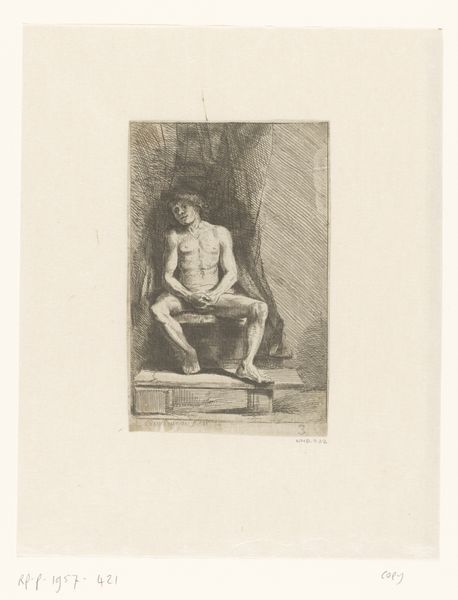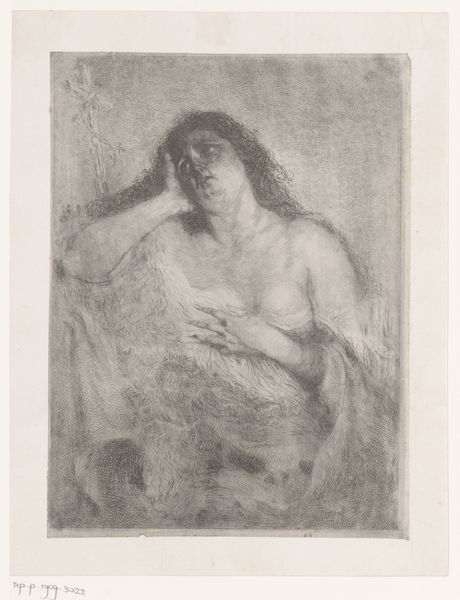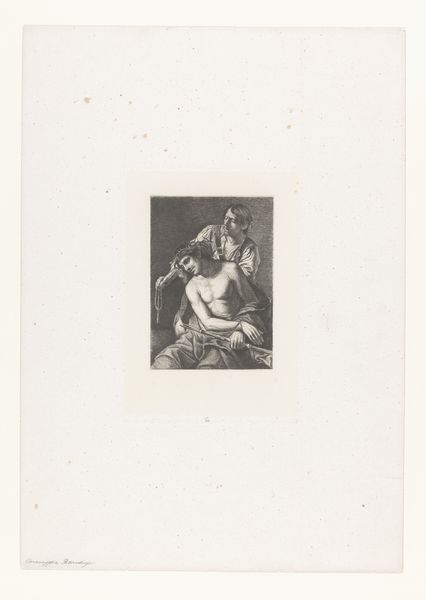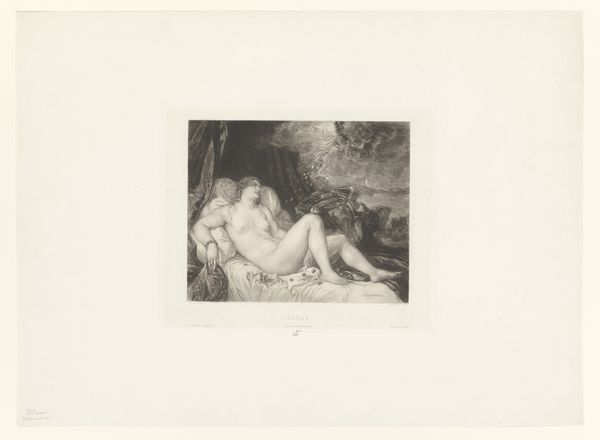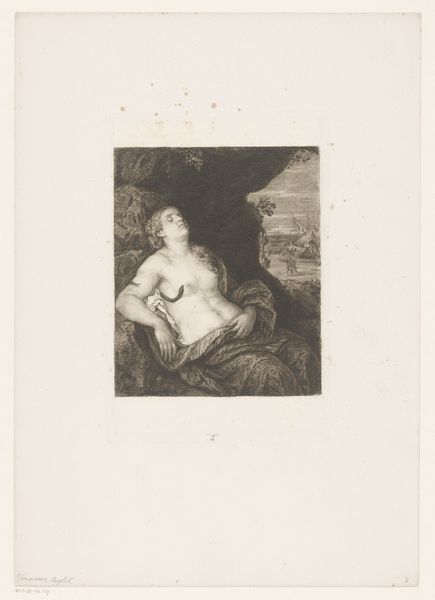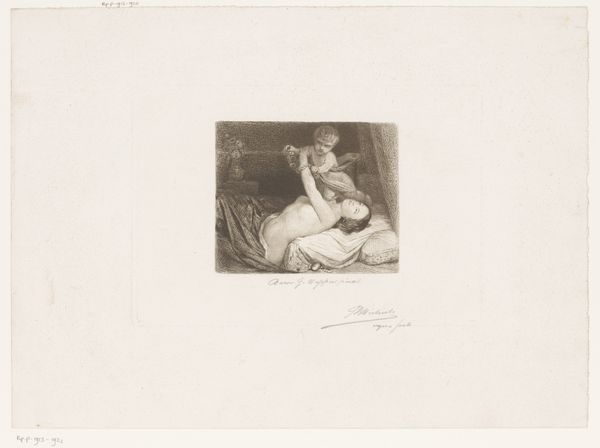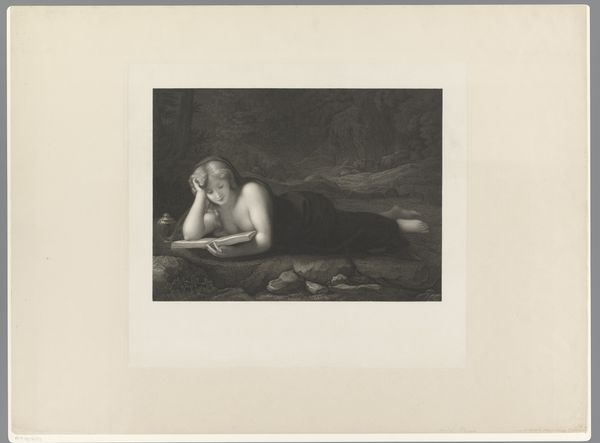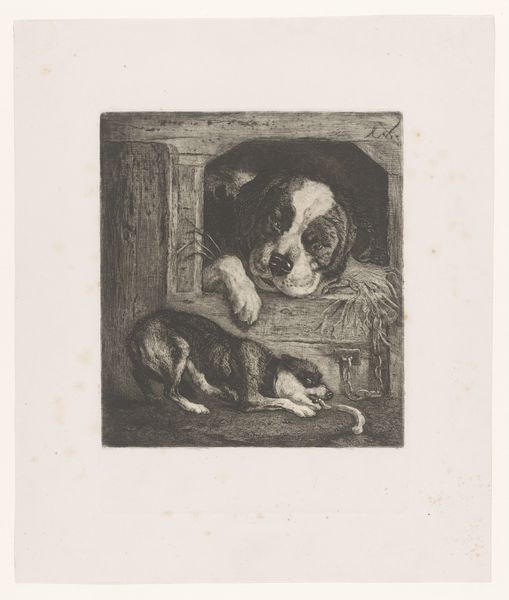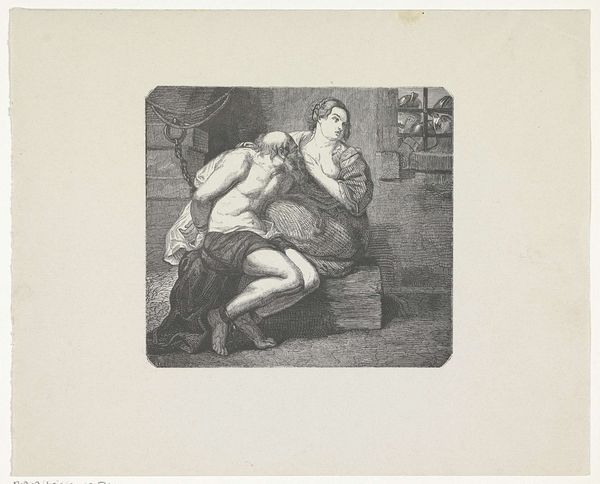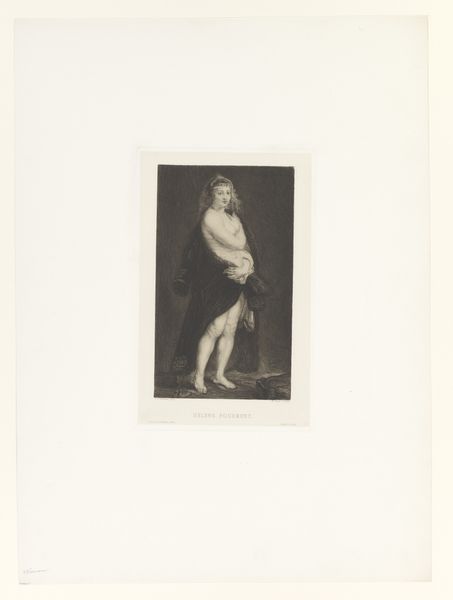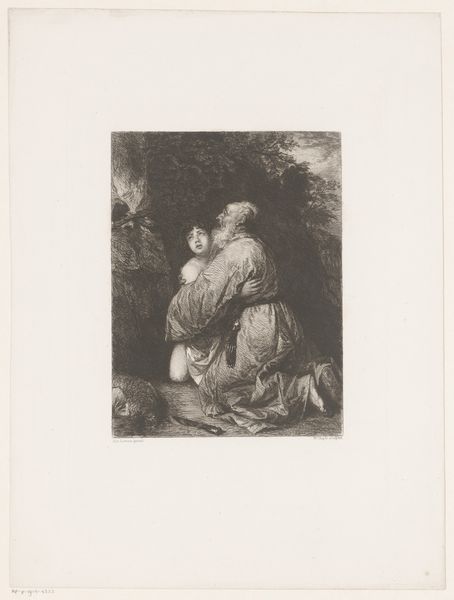
Dimensions: height 298 mm, width 218 mm
Copyright: Rijks Museum: Open Domain
Curator: Looking at "Repentant Mary Magdalene", an etching dating from sometime between 1861 and 1889 by William Unger, presently held at the Rijksmuseum, what are your immediate impressions? Editor: The overwhelming feeling is melancholy, a deep pensiveness. She is lovely but sorrowful; the somber, monochromatic palette adds to this sense of subdued sorrow. Curator: Indeed. Unger, a significant figure in 19th-century printmaking, worked in a period when Romanticism sought to depict heightened emotional states. It’s fascinating how this representation of Mary Magdalene resonates with a larger discourse around female penitence in that era. We must remember the socio-political conditions of the period, that were influencing all artists at the time, Unger included. Editor: Absolutely. It's all so clearly encoded within the image, from the skull-like vessel and the averted gaze, down to the lack of movement. Curator: Right, but considering its reception, don't you wonder if the audience's appreciation for "Repentant Mary Magdalene" might have been swayed by a prevailing sense of religious morality? I find it important to look at these artworks considering they’re made by human being to other human beings, as cultural products with a strong bond between their era and their viewers. Editor: Well, for centuries Mary Magdalene has often been depicted with her trademark attributes, as symbols to the eye that the artist has painted for those who would look, and I would be careful here about focusing only on those who shared some religious belief. It all makes her recognizable regardless. The ointment jar speaks to her anointing of Jesus, the skull –often implied– hints at mortality and repentance. The artistic liberty lies in Unger's sensitive depiction of grief. Curator: Very insightful. What strikes me most is how this etching functions within the 19th-century print market. How might viewers engaged with prints of religious figures in the context of expanding art availability and debates around its accessibility? Editor: I agree, a print, especially of this smaller scale, democratizes a deeply personal, symbolic moment. We get an intimate glimpse into the internal world of someone wrestling with faith and atonement, a very human drama captured in those etched lines. Curator: Ultimately, Unger's "Repentant Mary Magdalene" speaks volumes about 19th-century emotional landscapes. Editor: And its persistent themes of sorrow, repentance, and the beauty within both—remain strangely resonant even now.
Comments
No comments
Be the first to comment and join the conversation on the ultimate creative platform.

